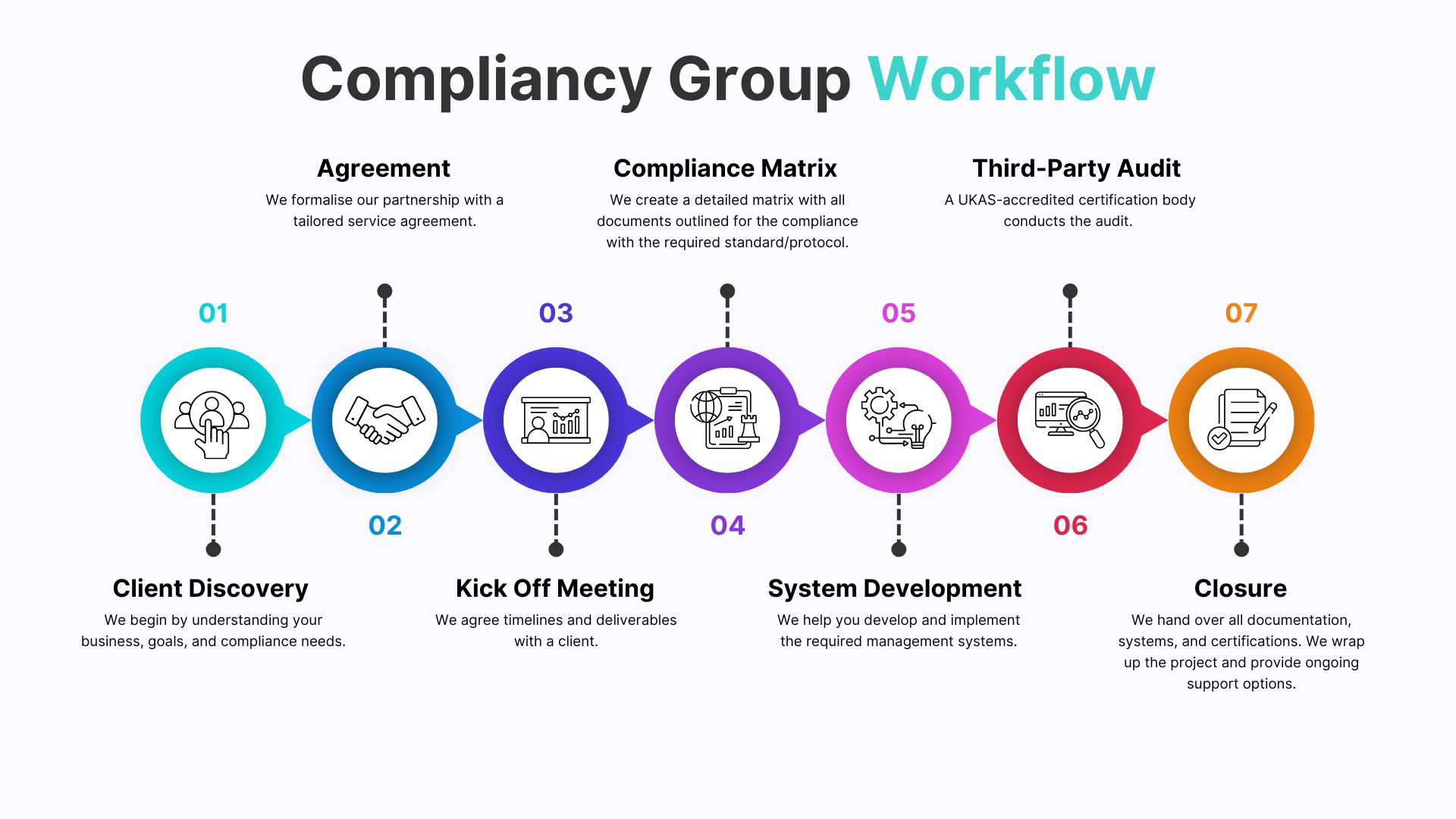We're Here To
Help
A Work at Height Risk Assessment is a targeted inspection designed to identify, evaluate, and control the risks associated with working above ground level. Completing a work at height assessment demonstrates your business’s commitment to employee safety, legal compliance, and proactive risk management – trusted by clients, partners, and regulators across all sectors. With robust work at height management, you reduce the risk of falls, injuries, and costly incidents, while showing you value your team’s wellbeing. Compliancy Group guides you through every step – making work at height compliance clear, practical, and a genuine business advantage.
We understand the complexities of working at height and the current legal landscape. Our team brings hands-on experience with risk assessments, control measures, and industry best practice.
No one-size-fits-all here. Whether you need an initial assessment, safe system of work development, staff training, or ongoing compliance advice, our services are fully customised to your operations. We offer flexible support packages—from essential guidance to comprehensive on-site consultancy.
We work exclusively with UKAS-accredited certification bodies and maintain a 100% pass rate for compliance assessments. Our clients trust us to deliver results that stand up to audit and regulatory scrutiny—helping you achieve, maintain, and leverage work at height compliance for business growth.
Compliance shouldn’t slow you down. We help you build safer environments, reduce risk, and improve operational efficiency—so you can focus on your core business.
You’ll work directly with our expert team, including leadership involvement from our CEO. We pride ourselves on responsive communication, clear guidance, and ongoing support throughout your compliance journey.
Demonstrate compliance to secure contracts and reassure clients, staff, and regulators.
Show your commitment to employee safety, wellbeing, and legal responsibilities.
Minimise the risk of falls, injuries, and costly liabilities.
Enhance your standing as a responsible and trusted employer.
Regular assessments and compliance checks foster a culture of ongoing safety and operational excellence.
Strengthen Reputation
From initial assessment to ongoing support, our team ensures you’re always prepared and confident.
We streamline compliance processes, freeing up your team to focus on core business activities.
Services are tailored to your specific business needs, not generic templates.
Ongoing support, training, and regulatory updates keep your business compliant long after inspection.
Our 100% compliance pass rate and exclusive partnerships with UKAS-accredited bodies mean you’re in safe hands.

Working at height risk assessment typically involves the following five steps: Identify the hazards: Determine the potential dangers of the specific task or work environment. Decide who may be harmed and how: Understand the potential consequences of the identified hazards for workers and others in the vicinity.
By law, every employer must conduct risk assessments on the work their employees do. If the company or organisation employs more than five employees, then the results should be recorded with details of any groups of employees particularly at risk such as older, younger, pregnant or disabled employees.
The Work at Height Regulations 2005 apply to all work at height where there is a risk of a fall liable to cause personal injury. They place duties on the University and any person who controls the work of others (e.g. Heads of Schools/Units) to the extent that they control the work.
Below are the major risks that are present when working at heights. •Falling from Height. ... •Dropping Equipment. ... •Mistakes with Ladders. ... •Poorly Stored Equipment. ... •Unguarded Openings. ... •Fragile Surfaces or Scaffolds. ... •Poor Edge Protection. ... •Insufficient Protective Equipment.
The law on work at height requires that you take account of your risk assessment in organising and planning work and identifying the precautions required. Your objective is to make sure work at height is properly planned, supervised and carried out in a safe manner.
Risk assessments are not only an important procedure in health and safety; they're also a legal requirement when it comes to keeping a working environment safe.
Working at height remains one of the biggest causes of fatalities and major injuries. Common cases include falls from roofs, ladders, and through fragile surfaces.
Not having a solid (and up-to-date) risk assessment can lead to accidents, injuries, fines, and even prosecutions, putting your employees' safety and your business' reputation on the line. In terms of severity, illness, injury, and death are some of the most disastrous consequences of a poor risk assessment.
There is no legal maximum working height for a ladder. But remember, ladders are best for access and low-risk short-duration work at height. Working at height is dangerous, it's number 1 on our top 5 construction safety hazards.